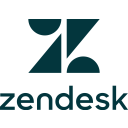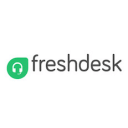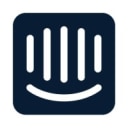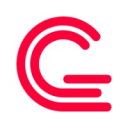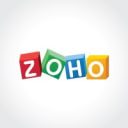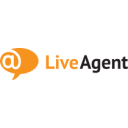Front vs Zendesk: Which customer support platform is right for you?
- 01Front vs Zendesk: overview
- 02What's the difference between Front and Zendesk?
- 03Front pros and cons
- 04Zendesk pros and cons
- 05Front compared to Zendesk
- 06Zendesk compared to Front
- 07Features comparison
- 08Front vs Zendesk: Which is the best for your business?
- 09Promotions on Customer Experience software
- 10Alternatives to Front & Zendesk
Access up to $4,740 savings on Front & $50,000 on Zendesk
Front
6 months free on Growth plan
Access up to $4,740 savings on Front & $50,000 on Zendesk
A powerful Customer Support solution centralizes communication channels, streamlining information sharing across your organization and enhancing customer service efficiency. It also delivers valuable insights into customer interactions and behaviors, helping shape your support strategies and improve customer satisfaction.
This article delves into a comparison of two popular customer support solutions, Front and Zendesk. Despite sharing similar functionality, the two platforms are vastly different—Front excels in collaborative email management, while Zendesk offers a comprehensive suite of support tools. Understanding these differences and the platforms’ key features will help you decide which is best for your organization. Let’s take a closer look at Front vs Zendesk.
Front vs Zendesk: overview
Front and Zendesk are two notable players in the customer support and communication software category, each offering unique strengths to cater to different business needs.
Front stands out for its collaborative email management and team inbox capabilities. It is particularly favored by teams for its ability to streamline communication processes and enhance the efficiency of handling customer inquiries. Zendesk, on the other hand, excels in providing comprehensive customer support solutions. It offers a robust suite of tools, including ticketing systems, knowledge bases, and live chat functionalities, which are highly beneficial for businesses looking to deliver exceptional customer service.
When deciding between Front and Zendesk, it's important to consider your primary business objectives and the nature of your customer support operations. If your focus is on enhancing team collaboration and managing communications more effectively, Front may be the more suitable choice. However, if you're seeking a solution that offers a wide range of customer support tools and advanced analytics, Zendesk would be the better option.
What's the difference between Front and Zendesk?
Front and Zendesk are both powerful customer support platforms designed to enhance communication and streamline customer service operations. However, they differ significantly in their feature sets and the specific needs they address.
Front is a collaborative email management tool, tailored for teams that need to handle shared inboxes efficiently. It excels in providing a unified interface where team members can manage emails, social media messages, and SMS from a single platform. Key features include shared inboxes, internal team comments, and integrations with various apps such as Slack and Asana. Front is particularly beneficial for organizations that prioritize team collaboration and require a system to manage high volumes of customer communication seamlessly. Its intuitive design and real-time collaboration features make it ideal for teams looking to improve their response times and overall communication efficiency.
On the other hand, Zendesk offers a comprehensive suite of customer support tools, including a robust ticketing system, live chat, knowledge base, and community forums. Zendesk’s powerful analytics and reporting capabilities provide deep insights into customer support performance, enabling organizations to make data-driven decisions to enhance their service quality. It is designed to handle complex customer service environments, making it suitable for larger organizations that need a wide range of support channels and extensive customization options. Zendesk also offers advanced automation features, such as AI-driven chatbots and automated ticket routing, which can significantly reduce the workload on support teams.
When choosing between Front and Zendesk, it’s essential to consider your organization’s specific needs and priorities. If your focus is on enhancing team collaboration and managing communications effectively across multiple channels, Front may be the better option. However, if you require a more extensive set of customer support tools and advanced analytics to manage a larger volume of support requests, Zendesk would likely be the more suitable choice.
Additionally, consider the integrations each platform offers and how they align with your existing tools and workflows. Front integrates well with various productivity tools, while Zendesk offers a vast marketplace of integrations and apps to extend its functionality.

6 months free on Growth plan on Front
Get 6 months free on Growth plan on Front and up to $4,740 savings with Secret.
Front pros and cons
What are the advantages of Front?
- Enhanced team collaboration: Front excels in fostering team collaboration with features like shared inboxes, internal comments, and email assignment. This makes it easy for team members to work together on customer inquiries without overlapping efforts or missing messages.
- Unified communication platform: Front consolidates various communication channels such as email, SMS, social media, and chat into a single interface. This centralization streamlines workflow and ensures all customer interactions are easily accessible and manageable.
- Real-time collaboration: The platform supports real-time collaboration, allowing team members to see who is viewing or replying to a message instantly. This helps in reducing response times and improving overall customer service efficiency.
- Customizable workflows: Front offers robust automation and customization options, enabling teams to create tailored workflows. Automated rules can be set up for routing, tagging, and prioritizing messages, which helps in maintaining an organized inbox and efficient process management.
- Integration capabilities: Front integrates seamlessly with a wide range of third-party applications, including CRM systems, project management tools, and collaboration apps like Slack and Asana. This extensibility ensures that Front can fit well into existing tech stacks and enhance overall productivity.
What are the disadvantages of Front?
- Limited advanced support features: Compared to comprehensive support platforms like Zendesk, Front lacks some advanced customer service features such as a built-in knowledge base, AI-driven chatbots, and extensive analytics. This might be a limitation for larger organizations with complex support needs.
- Scalability concerns: While Front is excellent for small to medium-sized teams, it may face scalability issues as the organization grows. Larger enterprises with high volumes of customer interactions might find the platform less capable of handling their requirements efficiently.
- Steep learning curve for some features: Some users may find the advanced customization and automation features of Front to have a steep learning curve. This can require additional training and time to fully utilize the platform’s capabilities.
- Pricing: Front's pricing can be relatively high, especially for smaller teams or startups. The cost can add up quickly with the addition of premium features and integrations, making it less attractive for budget-conscious organizations.
- Limited reporting and analytics: Although Front provides basic reporting and analytics, it does not offer as extensive or detailed insights as some competitors. Organizations that rely heavily on data-driven decision-making might find the analytics capabilities lacking.
Compare Front to other tools
Zendesk pros and cons
What are the advantages of Zendesk?
- Comprehensive support suite: Zendesk offers a wide range of tools for customer support, including ticketing systems, live chat, knowledge bases, and community forums. This comprehensive suite allows businesses to manage all aspects of customer service from a single platform.
- Advanced analytics and reporting: Zendesk provides powerful analytics and reporting features, enabling organizations to gain deep insights into their support operations. These insights help in identifying trends, measuring performance, and making data-driven decisions to improve customer service.
- Scalability: Zendesk is highly scalable, making it suitable for businesses of all sizes, from small startups to large enterprises. Its robust infrastructure can handle high volumes of customer interactions, ensuring reliable performance as the business grows.
- Automation and AI features: Zendesk includes advanced automation capabilities, such as AI-driven chatbots and automated ticket routing. These features help reduce the workload on support teams by handling repetitive tasks and ensuring that customer inquiries are directed to the appropriate agents.
- Extensive integrations: Zendesk offers a vast marketplace of integrations and apps, allowing businesses to extend the functionality of the platform. It integrates seamlessly with various third-party tools, including CRM systems, marketing automation platforms, and productivity apps.
What are the disadvantages of Zendesk?
- Complexity: Due to its extensive feature set, Zendesk can be complex to set up and manage. New users may face a steep learning curve, and additional training might be required to fully utilize the platform’s capabilities.
- Cost: Zendesk’s pricing can be quite high, particularly for smaller businesses or those with limited budgets. The cost can increase significantly with the addition of advanced features, add-ons, and higher-tier plans.
- Customization limitations: While Zendesk offers many customization options, some users may find it challenging to tailor the platform exactly to their specific needs. Certain customizations might require technical expertise or additional development resources.
- Performance issues: Some users have reported performance issues, such as slow load times and occasional downtime. These issues can impact the efficiency of customer support operations and overall user experience.
- Support response times: Despite being a customer support platform, some users have experienced slow response times from Zendesk’s own support team. This can be frustrating, especially when dealing with urgent issues or technical problems that require immediate attention.
Compare Zendesk to other tools
Front compared to Zendesk
Front and Zendesk cater to different customer support needs. Front excels in team collaboration and unified communication, offering shared inboxes and real-time collaboration tools ideal for smaller teams focused on streamlined communication.
In contrast, Zendesk provides a comprehensive suite of customer support tools, including advanced ticketing, live chat, and robust analytics, making it suitable for larger organizations requiring extensive support features and scalability. While Front is favored for its simplicity and ease of use in managing communications, Zendesk stands out with its powerful automation and deep analytics capabilities, addressing more complex customer service environments.
Is Front better than Zendesk?
Determining whether Front is better than Zendesk depends on your organization's specific needs. Front excels in team collaboration and streamlined communication, making it ideal for smaller teams that benefit from shared inboxes and real-time collaboration tools. Its simplicity and ease of use are significant advantages for businesses focused on efficient communication management.
On the other hand, Zendesk offers a comprehensive suite of support tools, including advanced ticketing, live chat, and robust analytics, catering to larger organizations with complex support requirements. Its powerful automation and extensive analytics capabilities make Zendesk a better fit for companies needing a scalable, feature-rich platform to handle high volumes of customer interactions.
What is Front best used for?
Front is best used for enhancing team collaboration and streamlining communication workflows. It excels in managing shared inboxes, allowing teams to handle emails, SMS, social media messages, and other communication channels from a single platform.
Front's real-time collaboration features, such as internal comments and email assignments, ensure that team members can work together efficiently without overlapping efforts. This makes it ideal for businesses that prioritize clear and organized communication, improving response times and overall customer service. Front is particularly beneficial for smaller teams or departments that need a unified, easy-to-use solution for managing high volumes of customer interactions.
Can Front replace Zendesk?
Front can replace Zendesk for teams that prioritize streamlined communication and collaboration over extensive support features. Front excels in managing shared inboxes and real-time team collaboration, making it suitable for smaller teams or businesses with straightforward support needs.
However, Zendesk offers a more comprehensive suite of customer support tools, including advanced ticketing, live chat, knowledge bases, and robust analytics, which are essential for larger organizations with complex support requirements. Therefore, while Front is excellent for enhancing communication efficiency, it may not fully replace Zendesk for businesses needing a wide range of advanced support functionalities and scalability.
Is Front cheaper than Zendesk?
Front is generally considered more affordable than Zendesk, particularly for smaller teams or businesses seeking a streamlined communication platform. Front's pricing is typically lower because it focuses on shared inbox management and team collaboration rather than offering an extensive suite of advanced customer support features.
In contrast, Zendesk provides a comprehensive range of tools, including sophisticated ticketing systems, live chat, and in-depth analytics, which often come at a higher cost. While Front offers a cost-effective solution for enhancing communication efficiency, Zendesk's higher price reflects its broader capabilities and scalability for larger organizations with complex support needs.
Is there a better Customer Experience software than Front?
While Front offers excellent team collaboration and communication management features, it's wise to explore alternative customer support software options to ensure you find the best match for your specific needs.
Several noteworthy alternatives to Front in the customer support software arena include Zendesk, Freshdesk, Intercom, and Help Scout.
The selection of the ideal customer support software depends on your business's unique requirements, priorities, and objectives. If you're in search of a platform renowned for its shared inboxes, real-time collaboration, and ease of use, Front may align perfectly with your goals. However, considering these alternatives can provide valuable insights and help you make a well-informed decision that best suits your specific customer support needs.
6 months free on Growth plan on Front
Get 6 months free on Growth plan on Front and up to $4,740 savings with Secret.
Zendesk compared to Front
Zendesk and Front cater to different aspects of customer support. Zendesk offers a comprehensive suite with advanced ticketing, live chat, knowledge bases, and powerful analytics, making it ideal for larger organizations with complex support needs. It excels in automation and scalability, providing a robust platform for extensive customer service operations.
In contrast, Front focuses on enhancing team collaboration and communication efficiency with features like shared inboxes and real-time collaboration tools. It is best suited for smaller teams or businesses that need a streamlined, easy-to-use solution for managing multiple communication channels. While Zendesk offers more extensive features, Front provides a simpler, more collaborative approach.
Is Zendesk better than Front?
Whether Zendesk is better than Front depends on your specific requirements. Zendesk is superior for larger organizations needing a comprehensive suite of tools, including advanced ticketing, live chat, and robust analytics. Its powerful automation and scalability make it ideal for handling complex support needs and high volumes of interactions.
However, for smaller teams or businesses prioritizing team collaboration and communication efficiency, Front's shared inboxes and real-time collaboration tools offer a more streamlined and user-friendly solution. Zendesk excels in providing extensive features and support capabilities, while Front focuses on simplicity and enhancing team collaboration.
What is Zendesk best used for?
Zendesk is best used for providing comprehensive customer support and managing complex service operations. It excels in offering advanced ticketing systems, live chat, knowledge bases, and community forums, which help businesses handle large volumes of customer inquiries efficiently.
Zendesk's powerful automation features, such as AI-driven chatbots and automated ticket routing, reduce the workload on support teams and improve response times. Its robust analytics and reporting tools provide valuable insights into customer interactions and support performance, enabling continuous improvement. Zendesk is particularly suited for larger organizations that need a scalable, feature-rich platform to deliver exceptional customer service across multiple channels.
Can Zendesk replace Front?
Zendesk can replace Front for organizations seeking a more comprehensive and scalable customer support solution. While Front excels in team collaboration and managing shared inboxes with real-time communication features, Zendesk offers a broader range of support tools, including advanced ticketing, live chat, and extensive analytics. This makes Zendesk suitable for larger businesses with complex support needs.
However, for teams primarily focused on streamlined communication and collaboration, Front's simplicity and ease of use may be more beneficial. The choice depends on the specific requirements and priorities of the organization, with Zendesk providing more extensive capabilities beyond communication management.
Is Zendesk cheaper than Front?
Zendesk’s pricing is generally more expensive than Front, reflecting its broader range of features and capabilities. While Front focuses on enhancing team collaboration and managing shared inboxes, making it a cost-effective solution for smaller teams or businesses with straightforward communication needs, Zendesk offers a comprehensive suite of customer support tools, including advanced ticketing, live chat, and robust analytics. This extensive functionality often comes at a higher price point.
Therefore, while Zendesk provides more advanced and scalable support solutions, Front tends to be more affordable for organizations prioritizing streamlined communication and collaboration over extensive support features.
Is there a better AI Customer Support software than Zendesk?
While Zendesk offers a comprehensive suite of customer support tools, it's wise to explore alternative customer support software options to ensure you find the best fit for your specific needs.
Several noteworthy alternatives to Zendesk in customer support software include Front, Gorgias, HubSpot Service Hub, and Zoho Desk.
The selection of the ideal customer support software depends on your business's unique requirements, priorities, and objectives. If you're seeking a platform known for its extensive support features, advanced ticketing systems, and robust analytics, Zendesk may align perfectly with your support goals.
6 months free on Zendesk
Get 6 months free on Zendesk and up to $50,000 savings with Secret.
Features comparison
Front Excels Ahead of Zendesk with Superior Email Templates for Consistent Communication
When it comes to crafting consistent, professional communication, Front offers superior email templates. Designed to save time and maintain consistency, these templates allow for customization of frequently sent messages. For example, customer support teams can create templates for common inquiries such as order confirmations, troubleshooting steps, or welcome emails. This feature ensures alignment with a team’s or company’s brand voice, enabling agents to respond quickly while maintaining a professional tone.
On the other hand, while Zendesk provides basic template functionality, it lacks the same level of customization and ease of use that Front's email templates offer, making Front the better choice for teams looking to streamline and professionalize their communications.
Front Outweighs Zendesk in User-Friendliness for Team Collaboration
Front and Zendesk are both user-friendly platforms, but their approaches towards ease-of-use manifest differently, with Front outweighing Zendesk. Front excels in user-friendliness through its intuitive interface designed for team collaboration, making it easy to manage shared inboxes, assign tasks, and communicate internally. For instance, users can leave comments directly on emails and see who is handling what in real-time, streamlining the workflow.
In contrast, while Zendesk offers robust features such as advanced ticketing and automation, its interface can be more complex and harder to navigate for new users, requiring a steeper learning curve and more extensive setup.
Zendesk Leads Front in Integration Capabilities with Over 1,000 Options
When it comes to integrations, both Front and Zendesk offer a wide array of possibilities, but Zendesk comes out ahead with over 1,000 integrations available. Zendesk's extensive integration options include popular customer relationship management (CRM) systems, e-commerce solutions, and analytics tools like Salesforce, Slack, Shopify, and Google Analytics, enabling businesses to create a highly customized and efficient support ecosystem. This vast selection allows companies to seamlessly connect their existing tools and enhance their support capabilities.
Front, while robust in its own right, offers around 110 integrations with essential tools like Asana, Trello, and HubSpot, making it suitable for teams seeking streamlined communication but not requiring the extensive integration network that Zendesk provides.
Front's Unified Inbox Enhances User Experience Compared to Zendesk's Multichannel Support
With Front’s unified inbox, messages from various channels such as email, social media, and chat are consolidated into a singular, streamlined inbox. This efficient feature eliminates the need to switch between different platforms, providing a more seamless user experience than Zendesk's multichannel support. For instance, a customer service team using Front can manage emails, Facebook messages, and SMS from one interface, reducing the time spent navigating multiple tools.
In contrast, Zendesk's multichannel support, while comprehensive, often requires users to handle different types of communication separately, which can be less efficient and more time-consuming for users needing a unified approach.
Zendesk Excels with Its Robust Ticketing System Compared to Front's Automated Routing
Zendesk shines with its robust ticketing system which simplifies the management of customer support requests. With this feature, it efficiently consolidates support requests from various channels, such as email, chat, and social media, into structured tickets that agents can track, prioritize, and respond to. This organized approach allows for better workflow management and ensures that no request is overlooked. For example, Zendesk's ticketing system enables agents to categorize and tag tickets, set priority levels, and use macros for quick responses.
In contrast, Front's automated routing feature, while useful for directing messages to the right team members, lacks the comprehensive structure and detailed tracking capabilities that Zendesk's ticketing system provides, making Zendesk the superior choice for managing high volumes of support requests.
Both Front and Zendesk Offer Comprehensive Analytics Tools for In-Depth Insights
Both Front and Zendesk provide users with comprehensive analytics tools, but they cater to slightly different needs. Front offers detailed insights into team performance, service quality, and customer engagement, helping teams identify trends and improvement opportunities. For example, Front’s analytics can track individual response times, the volume of messages handled by each team member, and customer satisfaction scores, enabling managers to optimize team workflows and enhance service quality.
Similarly, Zendesk provides robust reporting and analytics features that allow businesses to track and analyze various metrics such as response times, ticket volumes, and customer satisfaction. Zendesk’s advanced analytics also include customizable dashboards and in-depth reports, which help larger organizations monitor performance across multiple channels and identify areas for strategic improvements. This makes both platforms valuable, though Zendesk may offer more extensive options for larger enterprises needing detailed, multi-channel analysis.
Zendesk Excels Ahead of Front with Superior Customization Options for Branding Consistency
Zendesk excels with its customization options, allowing businesses to match the platform to their branding and design preferences seamlessly. For instance, Zendesk enables companies to customize the look and feel of their support portal, including logos, color schemes, and even custom CSS, ensuring that every customer interaction aligns with the company’s brand identity.
While Front also offers extensive customization through its workflow features, such as personalized email templates and automated rules, Zendesk's approach to customization provides a more coherent and consistent customer experience across all support interactions. This level of detailed customization helps businesses create a unified support environment that reinforces their brand, making Zendesk a more powerful tool for maintaining brand consistency in customer service.
Subscribe to our newsletters.
No FOMO here. Stay up-to-date on all the latest deals and news with our monthly newsletter straight to your inbox like 126,000+ entrepreneurs (+ Get 10% off on on our Premium Membership!)
Front vs Zendesk: Which is the best for your business?
Front is the best tool for you if:
- You need a platform that excels in team collaboration with features like shared inboxes and real-time communication.
- Your team requires a unified inbox to manage messages from various channels seamlessly.
- You prioritize ease of use and intuitive design to streamline communication and improve productivity.
- Your organization values customizable workflows and automation to enhance efficiency without the complexity of larger platforms.
- You are a small to medium-sized business looking for an affordable, scalable solution that integrates well with existing tools and applications.
Zendesk is the best tool for you if:
- You require a comprehensive suite of customer support tools, including advanced ticketing, live chat, and knowledge bases.
- Your organization needs powerful automation features like AI-driven chatbots and automated ticket routing to improve efficiency.
- You prioritize robust analytics and reporting capabilities to gain deep insights into customer support performance.
- Your business demands a highly customizable platform to ensure consistent branding and design across all support interactions.
- You are a large organization needing a scalable solution to manage high volumes of customer interactions across multiple channels.

6 months free on Growth plan on Front
Get 6 months free on Growth plan on Front and up to $4,740 savings with Secret.
Alternatives to Front & Zendesk
Promotions on Customer Experience software
Start saving on the best SaaS with Secret.
Secret has already helped tens of thousands of startups save millions on the best SaaS like Front, Zendesk & many more. Join Secret now to buy software the smart way.


